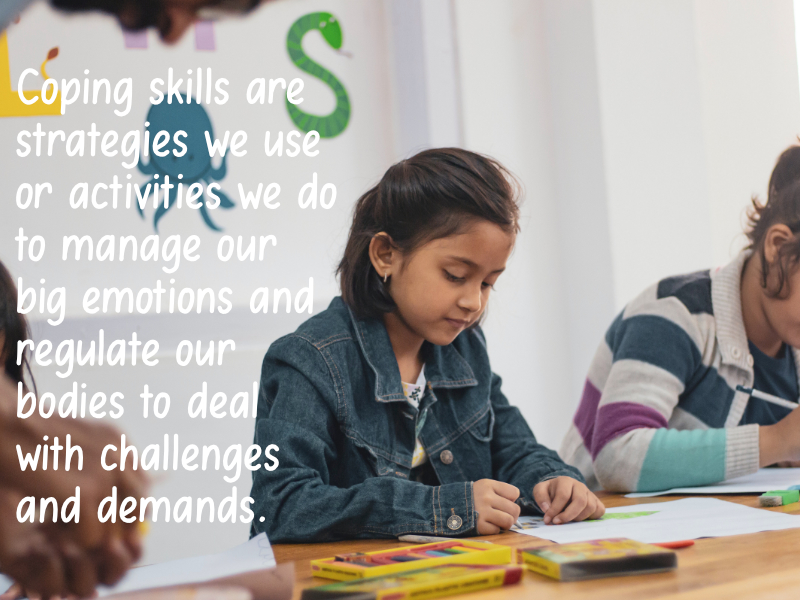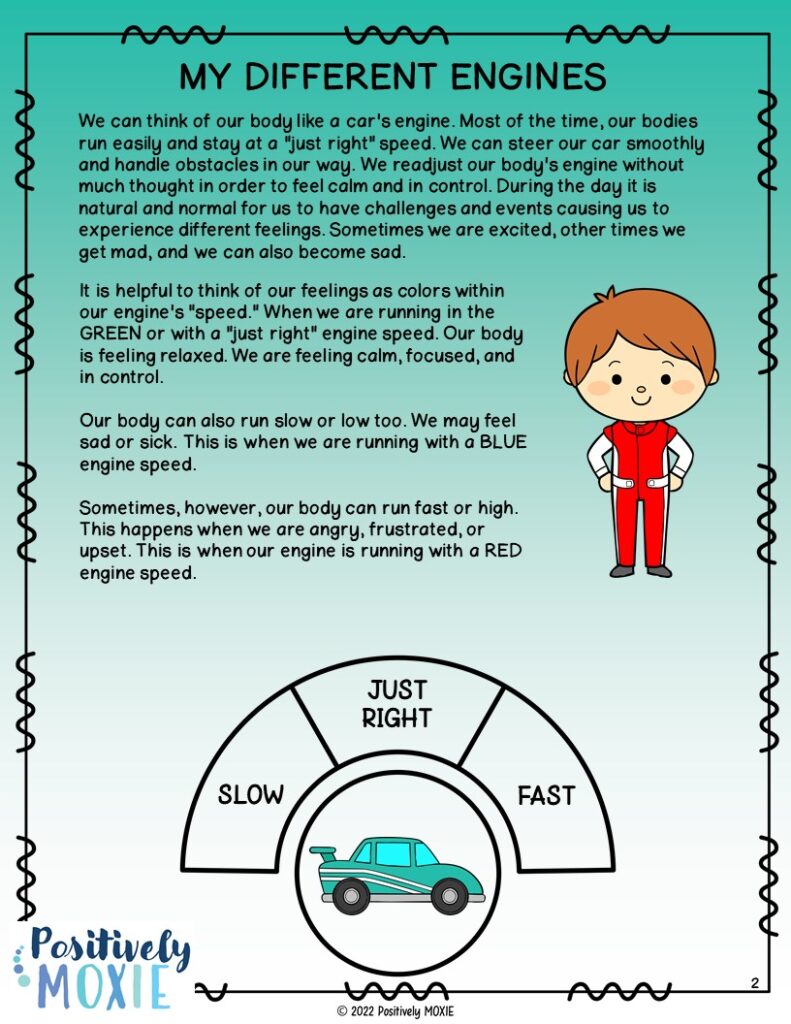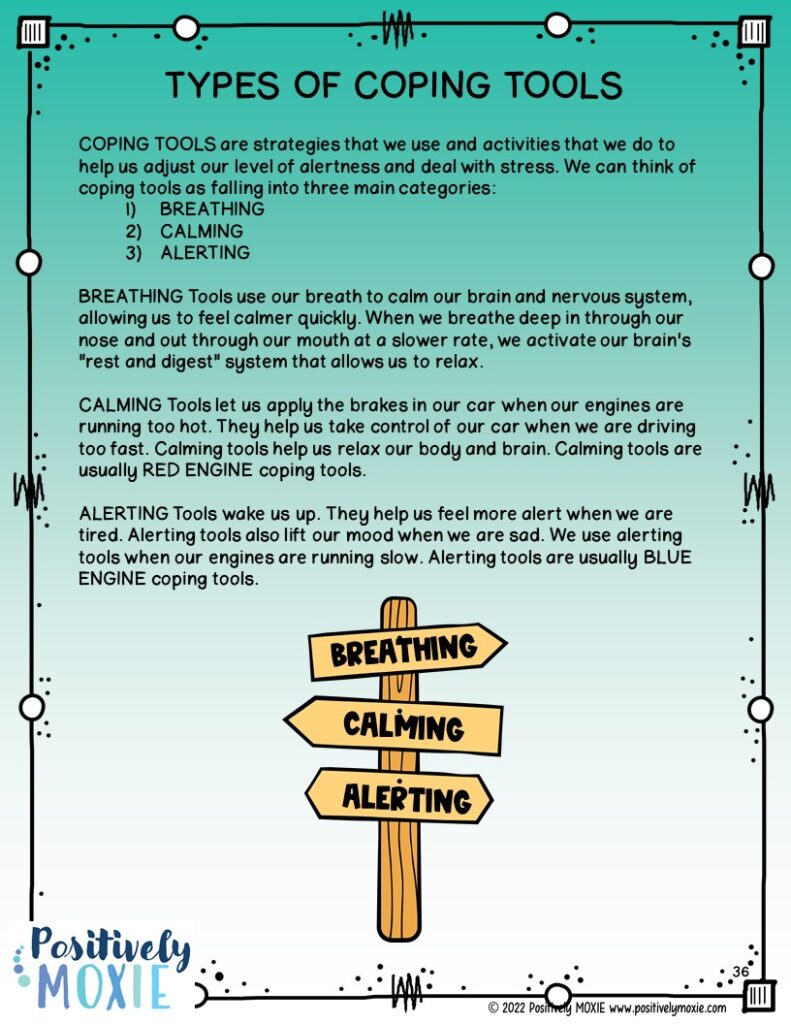
Coping skills help us calm our brains and bodies. We use coping skills to manage our big emotions and deal with stress. Teaching students to use coping skills at an early age is key to their social-emotional development. We do this by understanding our feelings and our thoughts about our situation. Now, more than ever, we need to help our students practice strategies that help them deal with stress.
What are coping skills for stress?
Everyday life can provide us with daily challenges and demanding situations. While we do not always have the ability to change our situation, we can do things to help us manage our responses. Coping skills are strategies we use or activities we do to manage our big emotions and regulate our bodies to deal with challenges and demands. This stress can occur when we are worried about an upcoming test, angry with a friend, or sad about being left out. We need to have intact coping skills in order to respond to stressful situations, rather than just react.
Why teach coping skills?
Students deal with stress on a regular basis. So, teaching students to deal with this stress is important. When students develop strong coping skills, it can make a difference in their school life and classroom behavior.
Different students need different tools. Some Learners might need a calming strategy when they come in from recess. Other students would benefit from techniques to relax in order to reduce test anxiety. Still, other students might do best with alerting tools to help wake their bodies and brain up during a long afternoon.
Why do coping skills help students?
We use coping tools to get back to the “just right” speed when our body’s “engine” is running too fast or too slow. Different coping tools work differently on us. The goal of using a tool is to help us regulate our emotional responses so we do not automatically go into a stress response or “flight or fight” reaction when encountering moments of frustration – both real and imagined!
How do you teach coping skills to students?
We can think of our bodies like a car’s engine. Most of the time, our bodies run easily and stay at a “just right” speed. We can steer our car smoothly and handle obstacles in our way. We readjust our body’s engine without much thought in order to feel calm and in control.
During the day it is natural and normal for us to have challenges and events causing us to experience different feelings. Sometimes we are excited, other times we get mad, and we can also become sad.
Coping tools help our body and brain move from frustration, anger, anxiety, and even sadness to feeling calmer and in control. Being able to use coping tools at the moment we need them most is hard. That’s exactly why we need to understand what coping tools are, how to use them, and practice them a lot! There are a few key methods for teaching your students coping skills.
- Teach a new coping skill when your students are calm. Ask your student when might they use this tool? Engage your students in a classroom discussion about what coping tools are and when might they use them.
- Make practicing coping skills fun. Use a game format. Suggestions include role play, bingo, draw-a-picture and guess, and charades.
- Practice using these powerful tools yourself! Modeling and verbalizing for your students is also important. For example, “I am going to do some mindful breathing right now.”
- Build coping skills into your classroom’s daily routine. Practice a coping technique after morning announcements. Use a calming tool after recess. Have your students practice a breathing tool before a big test.
- Engage a variety of coping skills. There is not a “one size fits all” approach to coping skills. Even using the same coping skill across similar situations may not work each time.
Examples of coping skills
Coping skills help us deal with stress. Generally, we can think of coping skills as falling into three main categories which include breathing, calming, and alerting.
Breathing coping skills use our breath to calm our brain and nervous system, allowing us to feel calmer quickly. When we breathe deeply in through our nose and out through our mouth at a slower rate, we activate our brain’s “rest and digest” system that allows us to relax.
Sesame Street in Communities website offers creative ways to teach young students breathing techniques including Count, Breathe, Relax. Students pretend to blow out one of the candles: take a deep breath in and then blow out, curling the finger down and finish exhaling. Other calming techniques include:
- Breathe deep
- Take 3 deep breaths
- Racetrack breathing
- Blow out 5 “finger” candles
Calming coping skills let us apply the brakes in our car when our engines are running too hot. They help us take control of our car when we are driving too fast. Calming tools help us relax our body and brain. Yoga is an excellent way to help students calm their bodies and quiet their minds. Little Flower Yoga and The School Yoga Project offers many resources including teacher certification training, student classes, and school wellness programs. Other calming technique includes:
- Draw or doodle
- Take a walk
- Watch a sensory bottle
- Read a book
- Smell vanilla or lavender
- Play with putty or playdough
- Blow bubbles
- Hum a song
- Rock in a rocking chair
- Sip water through a straw
Alerting coping skills wake us up. They help us feel more alert when we are tired. Alerting tools also lift our mood when we are sad. We use alerting tools when our body is running slow. Alerting techniques include:
- Jump on a trampoline
- Dance
- Smile
- Listen to music
- Eat a crunchy snack
- Smell peppermint
- Stretch high and low
About this coping skills workbook

Teach your students coping skills in a workbook format. This workbook teaches coping skills using a car’s engine to help learners identify engine speeds, recognize triggers, and then understand and use coping skills to handle stress.
This workbook is divided into seven units. Each unit has an “anchor page” which is the first activity within the unit. The anchor page outlines the main concept presented within the unit. Each unit has several worksheets to support the concepts presented.
Units are outlined as follows:
1: MY CAR – How our body’s “engine” and car’s engine are alike.
2: MY ROAD OF RESILENCE – Learn to build a wide road of resilience!
3: POTHOLES AND SPEED BUMPS – Recognize our triggers.
4: MAINTENANCE – Deal with flat tires and empty gas tanks.
5: CAR CARE – Use coping tools to stay on the road and run smoothly.
6: NAVIGATE MY ROAD – Map out a coping plan.
7: ARRIVING AT MY DESTINATION – Last stop to self-regulation.
When we are better able to understand our own emotions, we can more quickly calm our nervous system and deal with stress. Therefore, developing coping strategies is key to the development of emotional regulation.




